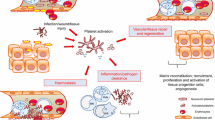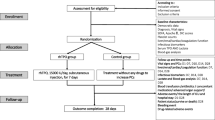Abstract
Objective: Altered platelet function plays a role in the pathophysiology of multiple organ failure in sepsis. The purpose of the present study was to evaluate various aspects of platelet adhesive function in septic patients and its putative relevance for prognosis.
Design: Prospective clinical study.
Setting: Intensive Care Unit of the University Hospital.
Patients and methods: A total of 41 patients admitted to the medical Intensive Care Unit were studied. On the day of admission, patients were evaluated by intensive care scoring systems (Elebute, APACHE II) to assess the severity of sepsis and multiple organ dysfunction syndrome (MODS), and platelet function tests were performed. All patients were observed for 28 days to assess their clinical outcomes. Eleven patients revealed septicemia without MODS (Elebute ≥12, APACHE II <20) and 20 septic patients suffered from MODS (Elebute ≥12, APACHE II ≥20). Ten non-septic patients without MODS served as a control group (Elebute <12, APACHE II <20). Flow cytometric determination of the activated fibrinogen (fg) receptor GPIIb-IIIa and as well as thrombospondin (TSP) on platelets and platelet-neutrophil adhesion (CD41 immunofluorescence) ex vivo was performed using monoclonal antibodies. The effect of plasma obtained from patients on normal platelet aggregation in vitro, and adhesion to cultured endothelial cells was evaluated.
Results: The surface expression of TSP on platelets was increased in septic patients with MODS compared to controls (p<0.03). Platelet-neutrophil adhesion was not significantly altered in septicemia (p<0.09) but decreased significantly in the presence of MODS (p<0.05) when compared to controls. Logistic regression analysis showed that platelet-neutrophil adhesion was an independent predictor for poor clinical outcome (p<0.01). Plasma from septic patients sensitized normal platelets to hyperaggregate and to adhere to cultured endothelium (p<0.01).
Conclusion: In septic patients platelets become activated and are hyperadhesive to other vascular cells including neutrophils and endothelium. This may induce sequestration of platelets and microcirculatory arrest, thus the development of MODS.
Similar content being viewed by others
Author information
Authors and Affiliations
Additional information
Received: 6 June 1996 Accepted: 4 October 1996
Rights and permissions
About this article
Cite this article
Gawaz, M., Dickfeld, T., Bogner, C. et al. Platelet function in septic multiple organ dysfunction syndrome. Intensive Care Med 23, 379–385 (1997). https://doi.org/10.1007/s001340050344
Issue Date:
DOI: https://doi.org/10.1007/s001340050344




